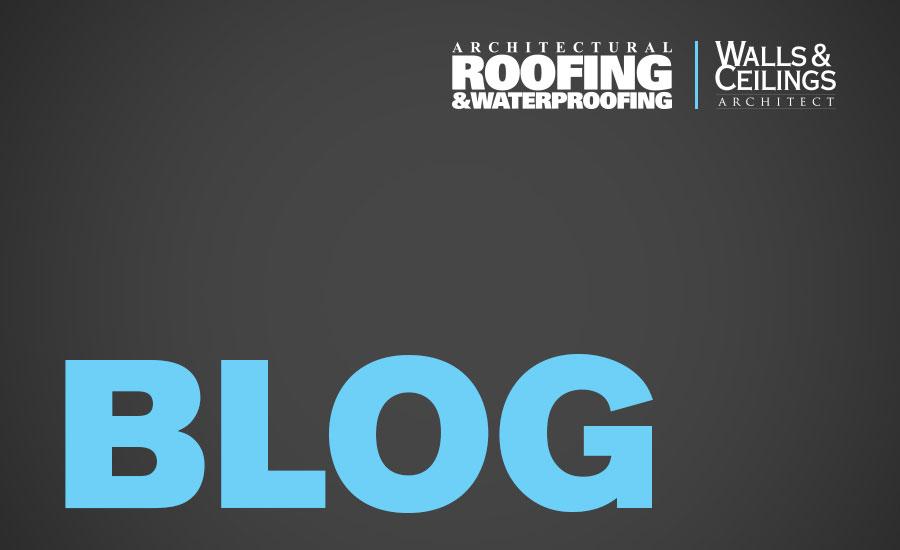Technical Details: Can Hail Damage a Roof System? Hail, Yes!

Hail force damage is often difficult to find because it is not easily detectable in all roof membranes. It is often only visible within or below the roof surface. Typically, the use of magnifying instrumentation or microscopic analysis is required to clearly identify the damage. Damage to single-ply membranes is often illustrated through fractures that occur at the bottom of the sheets. Damage to built-up roof membranes may occur in the inter-ply layers, and damage to some systems — such as SPF and PVC — can be identified at the surface layer in severely damaged conditions.
Small hailstones should not damage the membrane. However, it has happened. The best way to determine the size of the hail is by inspecting the metal components of rooftop equipment or copings. Indentations from hail over the metal coverings can be measured to determine the actual hail size. It is also a good idea to investigate adjoining roof areas or surrounding buildings to determine if the same storm produced similar damage.
Certain roof membranes are negatively affected by cold weather conditions. A combination of cold weather and rain can significantly cool the membrane surface and make it brittle, which makes it more susceptible to damage from the force of hail.
The Effects of Hail on Low-Slope Membranes
Depending on the type of membrane and the size of the hail, roof damage can be sustained in the form of punctures or holes. The roof area should be inspected after every hailstorm to insure that no damage has occurred. All commercial low-slope roof membranes can be damaged by hail to some extent. Damage can occur from improper installation or material defects.
Hail damage to built-up roof systems typically occurs due to improper application of surfacing aggregate. Aggregate that is not evenly distributed throughout the roof area (bare spots) or is applied in inadequate amounts renders the membrane vulnerable to hail force damage. As previously noted, the damage typically occurs at the inter-plies due to the force of the impact.
Hail damage to sprayed polyurethane foam roofs largely typically results from improper application. Inconsistent application, which results in uneven distribution of foam throughout the roof area, creates vulnerable points in the system for hail impact damage. Properly applied (thicker) areas are more likely to resist impact than the improperly applied (thinner) areas. The lower density of foam in the inadequately applied areas reduces the compressive strength of the material and increases the probability of damage from hail force impact.
Single-ply membranes can be susceptible to hail damage, especially if they are unreinforced and do not employ protective surfacing components or the redundancy of materials that other conventional low-slope roof systems provide. Thicker membranes withstand hail damage better than thinner ones do. Premature deterioration of the material can also contribute to hail-force damage. This type of material deterioration can be identified by taking samples from exposed field areas and from unexposed laps at covered seams. Comparative studies of these samples will indicate the differences in the physical properties of the membrane.
How to Avoid Hail Damage
The best way to avoid hail impact damage on low-slope roofs is by installing adequately manufactured materials in accordance with proper application procedures. The durability and puncture (impact) resistance of a membrane material is an important criterion of membrane selection, particularly in hail-prone regions. The impact resistance standards for membranes that are currently enforced in the Southern Florida Building Code may soon be enacted in all hurricane regions, due to significant membrane damage from projectiles during these windstorms. Similar codes may be considered in hail-laden regions. It is very likely that that the insurance companies that are paying millions of dollars in hail force damage on an annual basis will lobby for these types of requirements.
Some hail damage may occur due to the inherent tendencies of the applied membrane. The only defense against these situations is a combination of proper application procedures and the addition of protective surfacing components over vulnerable membranes. Proper application procedures include accurate and even distribution of aggregate on built-up roof systems and proper foam distribution in SPF systems. On single-ply applications it is critical that a durable (higher mil thickness), impact resistant (reinforced) membrane is installed. In hail-prone regions, additional surfacing components, such as pavers or ballast, may be considered to provide further protection.
